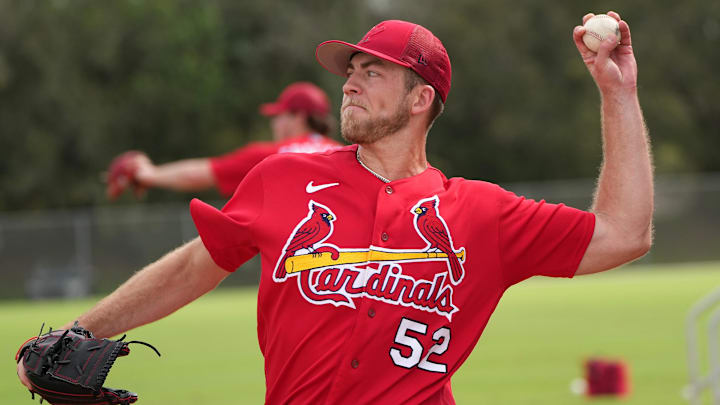The St. Louis Cardinals are in desperate need of an injection of energy and consistency, especially on the pitching front. An in-house option, less than 300 miles away in Memphis, provides a logical addition to the Cardinals' rotation.
- Reason #1: Across the board, his advanced metrics in 2023 are much improved
- Reason #2: His Velocity is up
- Reason #3: The St. Louis Cardinals have to see what they have in Matthew Liberatore
Nearly a month ago, my colleague Joshua Jacobs wrote about why LHP Matthew Liberatore needed to join the rotation in St. Louis. Since that day, the rotation has been inconsistent at best. Sans a few great outings from Miles Mikolas and Jordan Montgomery, it still looks like the Cardinals are sending out number three or number four starters on a consistent basis.
Unfortunately, the same cannot be said about other pitchers in the Cardinals' rotation - specifically Steven Matz and Jake Woodford. Both pitchers have been among the worst starters in baseball to this point, and it's hard to have faith in the Cardinals when those two take the mound. The Cardinals have considered skipping Matz's next start, and Adam Wainwright will surely take over for Woodford upon his return, but it really feels like a bigger shakeup may be needed here.
Luckily, the 5th-ranked organizational prospect, Matthew Liberatore is having an excellent start to his season in Memphis. While no one should expect Liberatore to be an ace or save the Cardinals season all on his own, there are a lot of reasons to be optimistic about his addition to the St. Louis rotation. This article will highlight three main reasons why Liberatore should be recalled from Memphis and get opportunities to stabilize the Cardinals' starting rotation.
